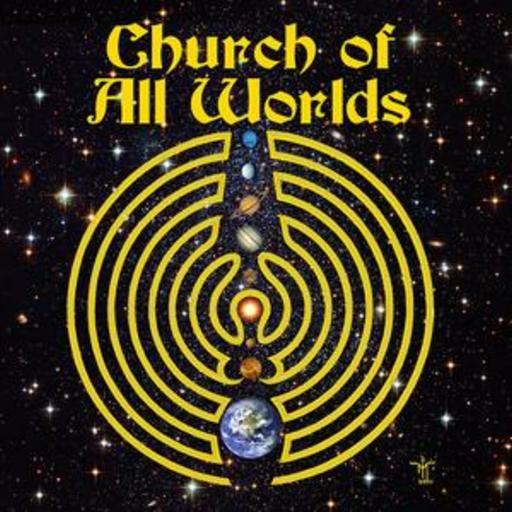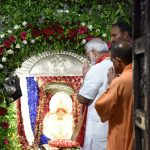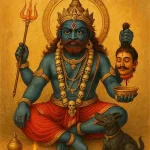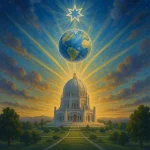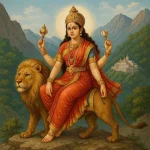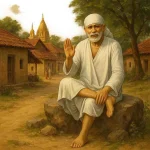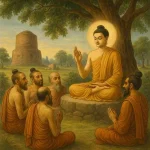Lesser Known Religions in World: Church of all Worlds
The Church of all Worlds (CAW) is the first Pagan Church founded in the US. It was incorporated in 1968 by Tim Zell (now Oberon Zell) and recognized by the IRS in 1970. Oberon read Stranger in a Strange Land by Robert Heinlein and was so inspired by the vision of a Nest — a close-knit group seeking a deep knowing of each other — that he brought his vision alive with the CAW. He continued his vision of forming community by founding Green Egg Magazine and the Mythic Images statuary company.

In the years since its founding, CAW has worked with this myth and many others: Oberon’s Theagenesis vision (a vision of Gaia as a living entity), the Greek Eleusinia (a sacred cycle of descent and return) and the May Royalty (who carry the energies of the Church from their crowning until Winter). Our rites are held on Annwfn, our sacred land in North California, or on other sacred sites across the country.

According to Encyclopaedia Britannica: Neo-Paganism, any of several spiritual movements that attempt to revive the ancient polytheistic religions of Europe and the Middle East. These movements have a close relationship to ritual magic and modern witchcraft. Neo-Paganism differs from them, however, in striving to revive authentic pantheons and rituals of ancient cultures, though often in deliberately eclectic and re-constructionist ways, and by a particularly contemplative and celebrative attitude. Typically people with romantic feelings toward nature and deep ecological concerns, Neo-Pagans centre their dramatic and colourful rituals around the changes of the seasons and the personification of nature as full of divine life, as well as the holy days and motifs of the religions by which their own groups are inspired.
Modern Neo-Paganism has roots in 19th-century Romanticism and activities inspired by it, such as the British Order of Druids (which, however, claims an older lineage). Sometimes associated with extreme nationalism, Neo-Pagan groups and sentiments were known in Europe before World War II, but contemporary Neo-Paganism is for the most part a product of the 1960s. Influenced by the works of the psychiatrist Carl Jung and the writer Robert Graves, Neo-Paganists are more interested in nature and archetypal psychology than in nationalism.

Neo-Paganism in the postwar decades has flourished particularly in the United States and the United Kingdom and in Scandinavia. Some of the major Neo-Pagan groups are the Church of All Worlds, the largest of all the pagan movements, which centres on worship of the earth-mother goddess; Feraferia, based on ancient Greek religion and also centred on goddess worship; Pagan Way, a nature religion centred on goddess worship and the seasons; the Reformed Druids of North America; the Church of the Eternal Source, which has revived ancient Egyptian religion; and the Viking Brotherhood, which celebrates Norse rites. Beginning in the late 1970s, some feminists, open to feminine personifications of the deity, became interested in witchcraft and Neo-Paganism.
While CAW members express a broad spectrum of personal magicks and beliefs, what brings us together is a shared set of values: immanent divinity (expressed as “Thou art God/dess”); self-knowledge and personal responsibility; deep friendship and tribal intimacy; positive sexuality; living in harmony with the natural world; and appreciation of the diverse nature of human beings.
We express our connections with each other with our most sacred rite of Watersharing. On a general level, it signifies our connection in the web of life. As we grow closer, it can be a reflection of a chosen kinship. At its deepest level, it can symbolize an intimate connection, be it erotic or one of sacred, bonded brotherhood.
The CAW has Nests in many states as well as a thriving online community. There are many ways to become involved, and you are welcome around our fire.
Present Status
Church of All Worlds One of the first and most influential contemporary Pagan churches. The key founder was Oberon Zell-Ravenheart (formerly Tim Zell, Otter G’Zell, Otter Zell and Oberon Zell), president, and his wife, Morning Glory Zell-Ravenheart. The headquarters are in Cotati, California.
The Church of All Worlds (CAW) espouses pantheism but is not a belief-based religion. Rather, it is a religion of experience, in which members called Waterkin experience Divinity and honor the experiences and perspectives of others. Divinity is defined as “the highest level of aware consciousness accessible to each living being, manifesting itself in the self-actualization of that Being.” The mission of CAW “is to evolve a network of information, mythology and experience that provides a context and stimulus for re-awakening Gaia, and re-uniting her children through tribal community dedicated to responsible stewardship and evolving consciousness.”

CAW recognizes the Earth Mother Goddess as well as the Green Goddess and the Horned God, who represent the plant and animal kingdoms, respectively. In CAW, many forms and levels of Divinity are honored — from the universal and cosmic (“The Great Spirit,” “Mother Nature”), to the polytheistic pantheons of various peoples and cultures, to the immanent divinity within each and every one. It is dedicated to the “celebration of life, the maximum actualization of human potential and the realization of ultimate individual freedom and personal responsibility in harmonious eco-psychic relationship with the total Biosphere of Holy Mother Earth.” It celebrates the eight seasonal festivals of Paganism and the Craft (see Wheel of the Year).
CAW may be the first religion to draw as much of its inspiration from the future as from the past. Its mythology includes science fiction, which played a significant role in the church’s beginnings.
Formation
CAW began in 1961 with a group of high school friends, led by Richard Lance Christie of Tulsa, Oklahoma, who became immersed in the ideas of Ayn Rand and the self- actualization concepts of Abraham Maslow. After enroll- ing at Westminster College in Fulton, Missouri, Christie met fellow student Tim Zell; together, they began experiments in extrasensory perception. The Christie group, which Zell joined, read Robert A. Heinlein’s science fiction novel Stranger in a Strange Land (1961), which became a catalyst and inspiration for CAW.
In the novel, Valentine Michael Smith is an Earthman born on Mars and raised by Martians. He eventually re- turns to Earth, where he finds that his upbringing renders him literally a “stranger in a strange land.” Smith forms the Church of All Worlds, organized in nests. The church teaches “grokking,” or the intuiting of the “fullness” of all things and beings, and joyful, coequal love between the sexes. God is immanent in all things; church members greet each other with “Thou art God.” In a ceremony called the “waterbrotherhood,” members share water and “grok,” the divine that exists in each other.

Heinlein’s book had a profound impact on the Christie- Zell group. They related it to Maslow’s self-actualizers, whom Maslow described as being alienated from their own culture. In 1962, following a water sharing between Zell and Christie, the group formed a water brotherhood called Atl, a term derived from an Aztec word for “water” and also meaning “home of our ancestors.” Atl remained a loose organization dedicated to innovative political and social change and attracted up to 100 members. ATL (now standing for Association for the Tree of Life) is still in existence and remains under the direction of Christie. Headquarters are in Moab, Utah.
From Atl, Zell founded CAW, and it evolved under his leadership. The church filed for incorporation in 1967 and was formally chartered on March 4, 1968, making it the first of the Pagan earth religions in the United States to obtain full federal recognition as a church. Zell coined the term Neo-Pagan to apply to the emerging, ecology- conscious Earth religions of the 1960s.
In 1968, CAW began publishing Green Egg under the editorship of Zell. The journal, one of three membership newsletters (the other two, Scarlet Flame and Violet Void, were short-lived), gained a reputation as one of the leading Pagan periodicals, providing a thought-provoking fo- rum for the exchange of ideas in the Pagan community.
CAW initially was refused recognition as a church by the state of Missouri because of its lack of dogma concerning God, the hereafter, the fate of souls, heaven and hell, and sin and its punishment, among other matters. That decision was reversed in 1971.
Beliefs
Like Heinlein’s fictional church, the early CAW was organized around nests. The church had nine circles of advancement, each named after a planet. One advanced by fulfilling reading and writing requirements and participating in psychic training systems such as a martial arts discipline. The process was intended to be continuous.
The basic dogma of the CAW was that there was no dogma; the basic belief was the lack of belief. The only sin was hypocrisy, and the only crime in the eyes of the church was interfering with another. The unofficial goal of CAW was to achieve union with all consciousness.

By 1970, CAW was placing greater emphasis on ecology and nature. The term Pagan was used less to identify non-Christians than to identify nature lovers of all religious persuasions. In 1970, Zell formulated and published what he called “the thealogy [sic] of deep ecology,” concerning the interconnection of all living things to each other and to Mother Earth, a sentient being in her own right. Humankind’s reconnection with nature is critical to the survival of the planet as a whole. Four years later, James Lovelock popularized this idea with his independent publication of the Gaia hypothesis.
Zell expresses impatience with contemporary religions because the sole interest of their followers is personal salvation, something he feels to be unworthy of primary attention in the greater context of the evolution of humanity — and all life — toward universal sentience.
@religionworldin
[video_ads]
[video_ads]

